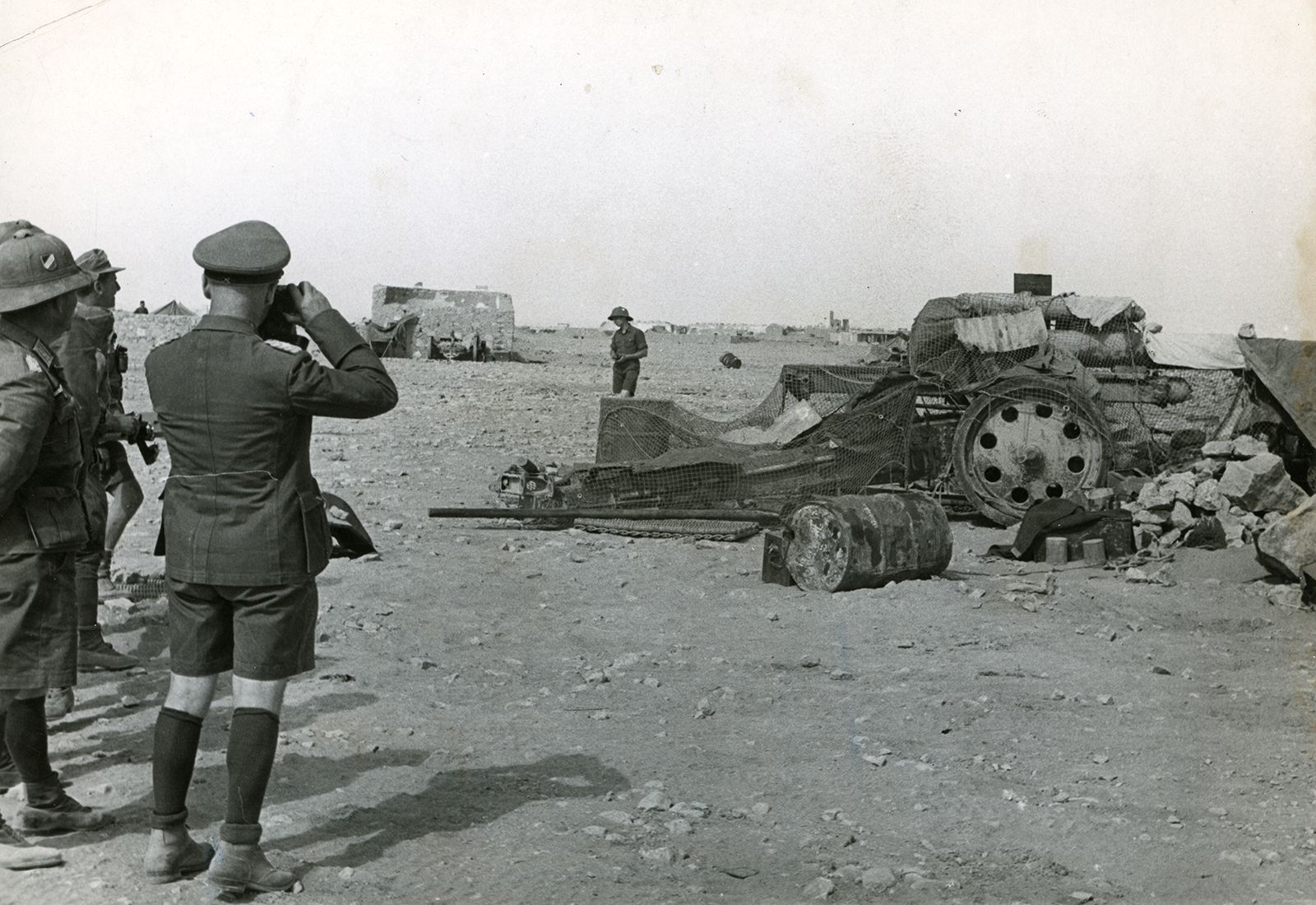
During the Second World War, the North African Campaign, also known as the Desert War, took place in the desert of North Africa from 10 June 1940 to 16 May 1943, including campaigns in Libya and Egypt (the Western Desert), in Morocco and Algeria (known by the Allies as the Operation Torch) and in Tunisia.
The campaign took place between the powers of the Axis and the Allied. The main war efforts were dominated by the Commonwealth and exiled from occupied Europe until the U.S. entered the war on 11 May, providing direct assistance to the Allied forces in North Africa.
The fighting in North Africa began with the Italian occupation of Fort Capuzzoby British forces in June 1940. A counter-offensive between the Italians and the British followed this.
When the Italians suffered terrible losses, the Afrika Korpsof Germany (commanded by Field Marshal Erwin Rommel) came to its aid. After a series of battles back and forth for control of Libya and parts of Egypt, British forces (commanded by General Bernard Montgomery) pushed Axis forces into Tunisia.
In mid-1942, the Allied landings of Operation Torch in North Africa (under General Dwight Eisenhower), and after some fighting against the forces of Vichy France (which later joined the Allies), Commonwealth and American forces led a pincer movement to Axis forces in northern Tunisia, where they were forced to surrender.
Making the Axis forces fight on a second front in North Africa, the Western Allies, in some way, helped the Soviet Union, which fought against the Axis on the Eastern Front. The information obtained from the operation Ultra decipher encrypted messages was an important aid to the Allied victory on this front.
The campaign in North Africa was very important strategically for the Axis and the Allies. The Allies used the campaign as an approach to a second front against the Axis of Fortress Europe and helped ease the pressure on the Russian front.
The Axis had planned to dominate the Mediterranean through control of Gibraltar and the Suez Canal and waged a successful campaign in North Africa where, attacking the north, would seize the rich wells of oil from the Middle East. This would cut oil supplies closer to the Allies and would have increased availability for the operation of the Axis war machine.
On 13 September 1940, the Italians launched their 10th Army, consisting of about 250,000 men, against British-controlled Egypt and set up strong defenses in Sidi Barrani. The 10th Army was not very mechanized, and the Italian General Graziani, having no information about the status of British forces, decided not to proceed to Cairo.
The Italians outnumbered British forces. A total of 200,000 to 35,000, and only half of the British troops were fighters. However, it launched a counterattack called Operation Compass. It was far more successful than they thought. They achieved the surrender of the entire 10th Army, and the Allied advanced up to El Agheila. The shocking news of the defeat was not lost on Italian and German troops quickly, and Rommel (The Desert Fox), the command of the German Afrika Korps, was sent in support.
If only they were ordered to hold the line, Rommel launched an offensive from El Agheila to regain the lost ground to Sallum, with the exception of Tobruk, leaving the territory almost as it was before the conflict.
During the next impasse, Allied forces were reorganized as the 8th Army, which consisted of units of the British Army and other countries, especially the Australian Army and the Indian Army but also the South African Army, the Army of New Zealand and the Brigade of the Free French led by Marie-Pierre Koenig. The new lineup released a new offensive and regained almost all the territory recently conquered by Rommel, except the garrisons of Bardia and Sallum. Again, the front was in Agheila.
After receiving supplies from Tripoli, Rommel struck again. Defeating the Allies at Gazala and Tobruk, pushed across the border from Egypt, where he was detained at the First Battle of Alamein.
At this time, Bernard Montgomery took over as commander of Allied forces in North Africa. After victories in the battles of Alam Halfa and the Second El Alamein, Montgomery began to force back the Axis forces to capture Tripoli.
Campaign in French-Algerian Morocco (Operation Torch)
The drive in Morocco and Franco-Algerian began on 8 November and ended on 11 November 1942. In an attempt to make a pincer movement on the German forces, the Allies landed in French North Africa controlled by Vichy France with the assumption that they would find little or no resistance.
However, the forces of Vichy France strongly resisted the Allies in Oran and Morocco. But not in Algiers, where the French Resistance made a coup on 8 November, which succeeded in neutralizing the French XIX Corps and by arresting officers in Algiers before the arrival of the Allies. Therefore, virtually the landings found no resistance in the city and captured the first day with all the control of Vichy.
After three days of talks and threats, General Mark Wayne Clark, an aide to Eisenhower, forced the Vichy Admiral François Darlan and the commander in chief (General Alphonse Juin) to order French forces to cease fire in Oran and Morocco between 10 and 11 November. Thus, Darlan would become the head of administration of the Free French.
The Allied landings prompted the German invasion of Vichy France (Operation Anton). In response, the French fleet was scuttled in Toulon, and the Vichy army in North Africa joined the Allies (see Free French Forces).
Tunisia’s campaign began on 17 November 1942 and ended on 13 May 1943. While U.S. forces and the Commonwealth surrounded Rommel, he could not resist a series of defensive operations. The most important was the defeat of the Second Corps (the United States) in the Battle of Kasserine Pass.
But anyway, Rommel was beaten in tactics, in men, and firepower. After the 8th British Army destroyed enemy defenses of the Mareth Line, the Allies pressed the Axis until resistance in Africa collapsed, ending with the surrender of these on 12 May 1943, with about 225,000 prisoners of war in Cape Bon. This loss of many units experienced a great reduction of the military capability of the Axis and the faith in victory in the war of the satellite itself.
After the Allied victory, it set the stage to start the campaign in Italy. The invasion of Sicily began just two months later.
